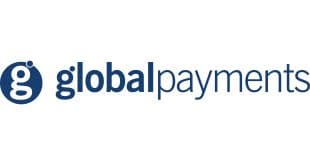Bank card merchant acquirers participating in American Express Co.’s OptBlue program signed 1 million small businesses for AmEx acceptance last year, an AmEx executive tells Digital Transactions News.
The push came as New York City-based AmEx drives toward chief executive Kenneth I. Chenault’s goal of having AmEx’s merchant base reach parity with the Visa/MasterCard base in 2019. AmEx in 2016 had about 8.5 million acceptance locations in the U.S., excluding ATMs and bank branches, according to a March presentation for an AmEx investor event. While up 33% from 6.4 million locations in 2013, AmEx is still about 1.5 million locations short of the bank card base. The main holdouts have been small businesses, which often are reluctant to pay AmEx’s discount rates, traditionally the highest among the four major U.S. general-purpose card brands.
But with JPMorgan Chase & Co.’s Chase Paymentech joining OptBlue last fall, AmEx now has 18 bank card acquirers representing virtually 100% of payment card volume in the program, according to Kathleen Fiorello, head of U.S. partner acquiring and capabilities in AmEx’s Global Merchant Service unit.
“In 2016 we’ve added another million merchants,” she says. “When you look at that point, every major acquirer was participating in the program and they were able to go back to their non-accepting base.”
AmEx launched OptBlue in late 2013 with JetPay Corp. and TransFirst, now part of Total System Services Inc. (TSYS), as its first acquirers. With OptBlue, the acquirer signs the merchant and owns the account, sets the discount rate based on wholesale rates from AmEx, and provides merchant service, a single statement with information about the merchant’s activity with all of the card brands, and a single source of settlement. When the merchant hits $1 million in annualized AmEx volume, AmEx itself takes over the account.
Among the new merchants last year were 100,000 restaurants, 58,000 salons and spas, 42,000 clothing stores, and 36,000 grocery and specialty food locations. Some 80,000 of the new acceptors are in the New York City area and 70,000 are in greater Los Angeles.
This year, AmEx is targeting several merchant sectors for greater acceptance, including government, education, health care, and franchises. In about two weeks, the company plans to roll out distinct acceptance policies and pricing for governmental entities and the education sector, according to Fiorello. Previously, AmEx bundled pricing for those two sectors under “all other,” she says, adding that AmEx’s rates were “probably not as competitive as we could be.”
“We’re going to be aggressive” in promoting the new policies to acquirers, she says.
AmEx hasn’t changed the basic premise of OptBlue since it launched as the successor to the OnePoint program, says Fiorello. With OnePoint, acquirers and independent sales organizations signed small businesses for AmEx acceptance, but AmEx owned the merchant relationships and set pricing.
“We’ve been pretty consistent … we’ve heard forever that merchants sort of wanted a one-stop shop,” she says.
AmEx has said in earnings reports that OptBlue’s pricing exerts some downward pressure on its worldwide average discount rate, which was 2.44% of the sale in 2016’s fourth quarter.
American Express has taken OptBlue abroad, most recently this year in Puerto Rico in partnership with San Juan-based acquirer Evertec Inc. In November, the program launched in Mexico with two partner acquirers. OptBlue debuted in Canada in 2015, where it has five acquirers: Moneris, Global Payments, Elavon, Chase Paymentech, and TD Merchant Services.




